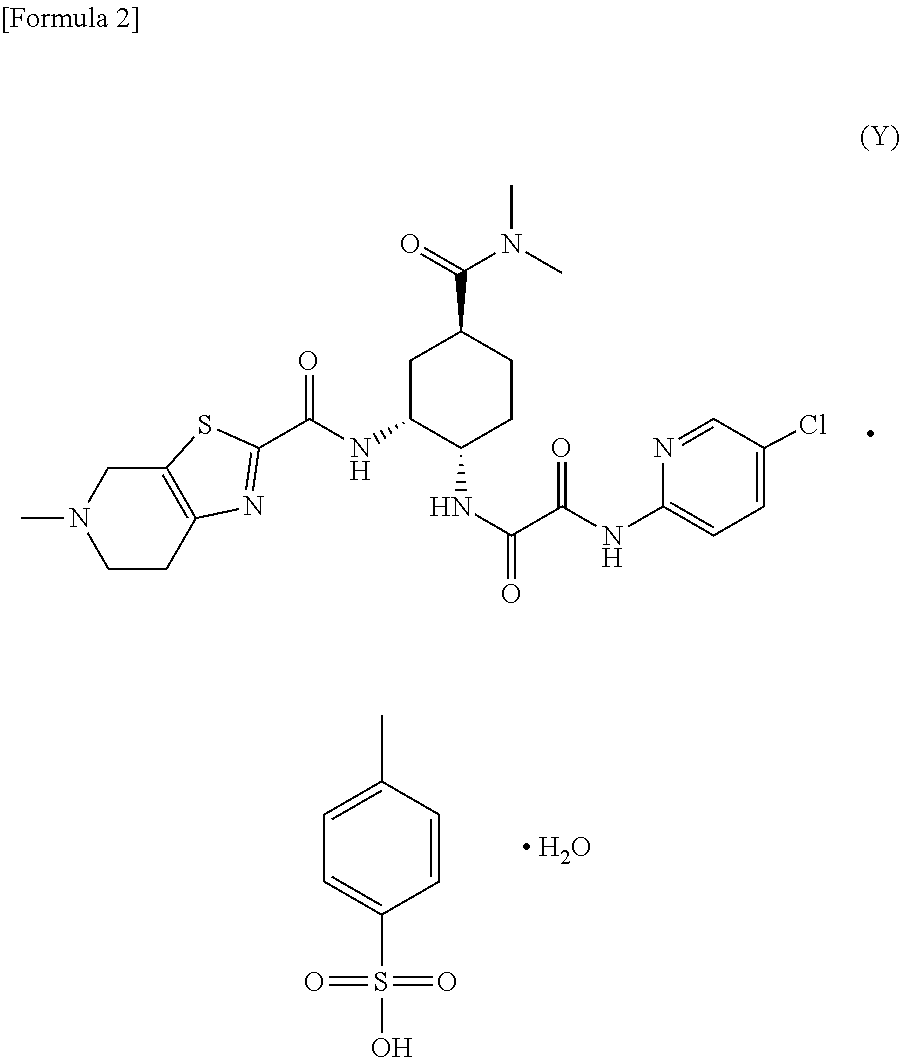Process for producing optically active carboxylic acid
a technology of optically active carboxylic acid and carboxylic acid, which is applied in the preparation of carboxylic compounds, organic racemisation, organic chemistry, etc., can solve the problems of large amount of solvents, high cost of d-pantolactone, and neither document discloses a recycling method, etc., and achieves the effect of cheap and efficient production
- Summary
- Abstract
- Description
- Claims
- Application Information
AI Technical Summary
Benefits of technology
Problems solved by technology
Method used
Image
Examples
example 1
(R)-α-Phenylethylamine salt of (S)-3-cyclohexene-1-carboxylic acid
[0084]3-Cyclohexene-1-carboxylic acid (1.0 kg) was dissolved in 4.8% aqueous acetone (7.5 L). To the solution, a solution of (R)-α-phenylethylamine (624.3 g) dissolved in 4.8% aqueous acetone (500 ml) was gradually added at 50° C., and the mixture was stirred at this temperature for 4 hours. The suspension was cooled to 35° C. and stirred at this temperature for 16 hours and then further at 10° C. for 3 hours. The suspension was subjected to filtration under reduced pressure to obtain 837.1 g of the title compound as white crystals. Its optical purity was 63% de. To the obtained salt (700 g), 4.8% aqueous acetone (5.6 L) was subsequently added, and the mixture was stirred for 5 hours under heating to reflux, at 30° C. for 13 hours, and then for 3 hours under ice cooling. The suspension was subjected to filtration under reduced pressure to obtain 519.4 g of the title compound as white crystals. Its optical purity was 8...
example 2
(R)-α-Phenylethylamine salt of (S)-3-cyclohexene-1-carboxylic acid
[0089]3-Cyclohexene-1-carboxylic acid (30 g) was dissolved in 3% aqueous ethyl acetate (150 ml). To the solution, a solution of (R)-α-phenylethylamine (23.0 g) dissolved in 3% aqueous ethyl acetate (30 ml) was gradually added at 55° C., and the mixture was stirred at this temperature for 6 hours. The suspension was stirred at 25° C. for 5 hours and further at −10° C. for 2.5 hours. The suspension was subjected to filtration under reduced pressure to obtain 32.9 g of the title compound as white crystals. Its optical purity was 49% de. To the obtained salt (32.7 g), 3% aqueous ethyl acetate (196 ml) was subsequently added, and the mixture was stirred at 55° C. for 3 hours, then at 25° C. for 5 hours, and further at −10° C. for 2.5 hours. The suspension was subjected to filtration under reduced pressure to obtain 24.7 g of the title compound as white crystals. Its optical purity was 78% de. To the obtained salt (24.6 g),...
reference example 1
(R)-α-Phenylethylamine salt of (S)-3-cyclohexene-1-carboxylic acid
[0091]3-Cyclohexene-1-carboxylic acid (10.0 g) was dissolved in acetone (70 ml). To the solution, a solution of (R)-α-phenylethylamine (6.2 g) in acetone (10 ml) was gradually added at 50° C., and the mixture was stirred at this temperature for 4 hours. The suspension was cooled to 30° C. and stirred at this temperature for 16 hours and then further at 10° C. for 3 hours. The suspension was subjected to filtration under reduced pressure to obtain 9.5 g of the title compound as white crystals. Its optical purity was 45% de. Various spectroscopic data were in agreement with those of Example 1.
PUM
| Property | Measurement | Unit |
|---|---|---|
| Fraction | aaaaa | aaaaa |
| Fraction | aaaaa | aaaaa |
| Inhibition | aaaaa | aaaaa |
Abstract
Description
Claims
Application Information
 Login to View More
Login to View More - R&D
- Intellectual Property
- Life Sciences
- Materials
- Tech Scout
- Unparalleled Data Quality
- Higher Quality Content
- 60% Fewer Hallucinations
Browse by: Latest US Patents, China's latest patents, Technical Efficacy Thesaurus, Application Domain, Technology Topic, Popular Technical Reports.
© 2025 PatSnap. All rights reserved.Legal|Privacy policy|Modern Slavery Act Transparency Statement|Sitemap|About US| Contact US: help@patsnap.com



